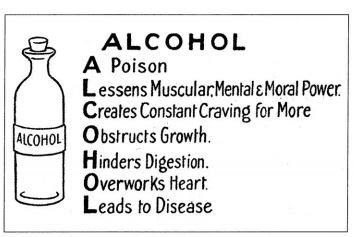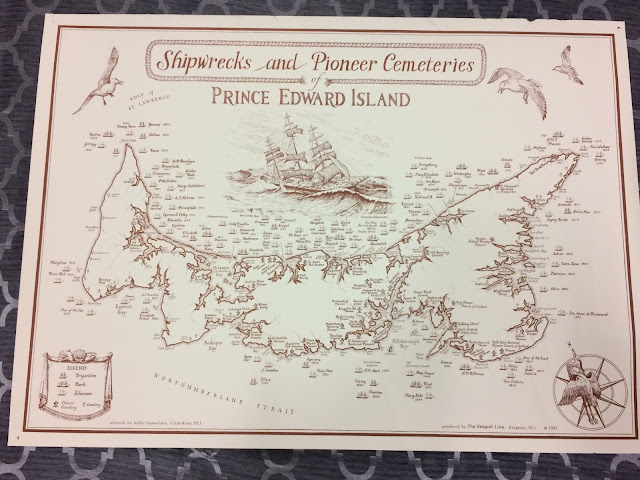A Short Introduction to Prohibition on PEI
Let's talk about prohibition. That time in Island history when you couldn't drink liquor. Considering the good beer, wine, and shine we make on the Island, it can be hard to think of a time when PEI was dry. Well, legally dry. But with rum-running and home-made brews, the Island was never really dry. But, that is a topic for another day.
As there is so much to cover around the topic of prohibition, including temperance and run-running, I am going to give you a brief introduction to Island prohibition, which officially lasted from 1901 to 1948. However, that is only when prohibition covered the entire Island. From around 1880, different districts held plebiscites every few years to see if they would be wet or dry. Which means there was some form of prohibition in place on the Island from 1880 to 1948.
How much did Islanders drink?
In 1825, our population of just under 25,000 people consumed:
- 54,000 gallons of rum
- 2,500 gallons of brandy
- 3,000 gallons of gin
- 2,000 gallons of wine
This equals to about 2.3 gallons per person on the Island. Including children. So in reality, this number would be higher if it only counted those who actually drink. These numbers also do not include beer. Not all liquors are included in the stats I could find either. For example, moonshine isn't there. Also, rum was incredibly popular! Not that rum isn't good but as a gin drinker, I do wish the stats for gin were higher.
And what about alcoholic content? During the rum-running years, runners and sellers often had to water down the rum because its liquor content was too high! I would suspect, it would be the same for other liquors as well.
Restrain Yourself!
Through the work of organizations like the Temperance Movement, the amount of liquor consumed per person was down to 1.3 gallons per year by the 1860s. The Temperance Movement promoted restraint and control when drinking. They encouraged moderation and drinking for special occasions - don't go to the pub or be drunk every night. It made sense and was a good argument.
But, it soon became a push for abstinence. People are still drinking, so let's ban it! The prohibition movement was spreading throughout North America and many Churches felt it was their duty to support it as well.
As there is so much to cover around the topic of prohibition, including temperance and run-running, I am going to give you a brief introduction to Island prohibition, which officially lasted from 1901 to 1948. However, that is only when prohibition covered the entire Island. From around 1880, different districts held plebiscites every few years to see if they would be wet or dry. Which means there was some form of prohibition in place on the Island from 1880 to 1948.
 |
| Image from Island Magazine. |
How much did Islanders drink?
In 1825, our population of just under 25,000 people consumed:
- 54,000 gallons of rum
- 2,500 gallons of brandy
- 3,000 gallons of gin
- 2,000 gallons of wine
This equals to about 2.3 gallons per person on the Island. Including children. So in reality, this number would be higher if it only counted those who actually drink. These numbers also do not include beer. Not all liquors are included in the stats I could find either. For example, moonshine isn't there. Also, rum was incredibly popular! Not that rum isn't good but as a gin drinker, I do wish the stats for gin were higher.
And what about alcoholic content? During the rum-running years, runners and sellers often had to water down the rum because its liquor content was too high! I would suspect, it would be the same for other liquors as well.
Restrain Yourself!
Through the work of organizations like the Temperance Movement, the amount of liquor consumed per person was down to 1.3 gallons per year by the 1860s. The Temperance Movement promoted restraint and control when drinking. They encouraged moderation and drinking for special occasions - don't go to the pub or be drunk every night. It made sense and was a good argument.
But, it soon became a push for abstinence. People are still drinking, so let's ban it! The prohibition movement was spreading throughout North America and many Churches felt it was their duty to support it as well.
The Legislation
For prohibition to be "effective" it needed legislation. Because as well all know if something is illegal, no one will use it - looking at you cannabis - no one smoked you because you were illegal.
In 1878, the federal government passed the Canada Temperance Act. This legislation gave the provinces the power to prohibit liquor as they saw fit.
The federal government did hold a national plebiscite to see if Canadians wanted prohibition on a national scale. Prohibition narrowly won, about 51%, but there were major disparities among different regions and Quebec voted about 71% against it. Prime Minister Laurier opted not to enforce prohibition and leave the matter to the provinces.
The federal government did hold a national plebiscite to see if Canadians wanted prohibition on a national scale. Prohibition narrowly won, about 51%, but there were major disparities among different regions and Quebec voted about 71% against it. Prime Minister Laurier opted not to enforce prohibition and leave the matter to the provinces.
Then in 1880, PEI enacted the PEI Prohibition Act, AKA Scotts Act. Under this Act, the counties held plebiscites every few years to decide if they would remain dry. Some cities, like Charlottetown, held their own plebiscites, meaning that from 1880 to 1901, Charlottetown was only dry for 13 of those years. So essentially, if you wanted to legally get liquor you went to Charlottetown if it was one of their wet years. Or you made your own or went to your local bootlegger.
But there were loopholes.
Medicinal, industrial, and sacramental liquor could still be obtained legally. As you can imagine, people abused these loopholes.
Also, the Island's prohibition statute made it illegal to sell alcohol and the Island didn't have any breweries of its own at the time. So there were no brewery organizations to fight against this legislation. Until 1923, individuals could still import liquor from other provinces. After this, however, the laws tightened up.
When something people want is made illegal, a black market will develop. And rum-running was born. Atlantic Canada was perfectly suited for this enterprise. We had easy access to St. Pierre and Miquelon, a French island, where liquor could be legally made and sold; fishing vessels that could hide liquor; coves to hide in; many island citizens on your side who would help you hide liquor or not report you; and easy access to the eastern seaboard markets of the equally dry United States.
But there were loopholes.
Medicinal, industrial, and sacramental liquor could still be obtained legally. As you can imagine, people abused these loopholes.
Also, the Island's prohibition statute made it illegal to sell alcohol and the Island didn't have any breweries of its own at the time. So there were no brewery organizations to fight against this legislation. Until 1923, individuals could still import liquor from other provinces. After this, however, the laws tightened up.
Ending Prohibition
Prohibition slowly ended in the other Canadian provinces:
Nova Scotia: 1916-1930
New Brunswick: 1917-1927
Ontario: 1916-1927
Manitoba: 1916-1923
Saskatchewan: 1915-1925
Alberta: 1916-1924
British Columbia: 1917-1921
New Brunswick: 1917-1927
Ontario: 1916-1927
Manitoba: 1916-1923
Saskatchewan: 1915-1925
Alberta: 1916-1924
British Columbia: 1917-1921
Newfoundland wasn't part of Canada at the time, but they had prohibition from 1917-1924.
Quebec implemented prohibition in 1918. it only lasted a few weeks before they repealed it.
For other provinces, prohibition was a wartimes act which is why it started in the other Canadian provinces between 1915 and 1917 and in most cases, ended in the 1920s.
Quebec implemented prohibition in 1918. it only lasted a few weeks before they repealed it.
For other provinces, prohibition was a wartimes act which is why it started in the other Canadian provinces between 1915 and 1917 and in most cases, ended in the 1920s.
MacKay, M. "Drinking it all in," The Guardian. September 30, 2017. https://www.theguardian.
Marquis, G. "Prohibition's Last Outpost." Island Magazone htt


Comments
Post a Comment